Hangary lotnicze
Część 3
Hangary w Polsce po drugiej wojnie światowej.
Koniec 40-lat, to czas, w którym komunistyczna władza w Polsce nie nastawiała się na rozwój lotnisk. W efekcie powstały plany likwidacji wielu lotnisk, a ich teren przeznaczano pod grunty role, czasem do zalesienia. Tylko przypadek zrządził, że wydano dyrektywę, o zachowaniu infrastruktury lotniskowej. Nie stało się to z chęci rozwoju komunikacji lotniczej, czy szeroko pojętego lotnictwa turystycznego. Nowa władza traktowała lotnictwo komunikacyjne i turystyczne, jako komunistyczną fanaberię. Jednak w obliczu prawdopodobnej trzeciej wojny światowej, tereny dla bazowania samolotów wojskowych byłyby niezbędne.
To, że przystąpiono już do likwidowania lotnisk świadczy przypadek hangarów na lotnisku Krzesiny. Hangary te zdemontowano i przetransportowano do Świdnika, gdzie posłużyły jako hale produkcyjne w WSK PZL Świdnik. Hangary z innych lotnisk były także demontowane i przewożone do miast, gdzie po zmontowaniu stawały się halami sportowymi. Za tego typu działaniami zawsze stały dyrekcje dużych zakładów przemysłowych, które w ten sposób organizowały rozrywkę swoim pracownikom. Proceder ten był faktem, ale nie masowym, a to z prostego powodu. Do prac rozbiórkowych, transportu i ponownego montażu trzeba było wykorzystać ciężki sprzęt budowlany, którego w Polsce było niewiele.
Kiedy wybuchła wojna w Korei, Moskwa nakazała Polsce zbudować wiele lotnisk wojskowych zlokalizowanych w leśnych obszarach, zwłaszcza na zachodzie i północy Polski. Zbudowano blisko 100 nowych lotnisk. Jednak ich infrastruktura często ograniczała się do pola wzlotów. Hangary były tam budowlami drugorzędnymi. Ich wznoszenie rozpoczęto dopiero na przełomie 50/60 lat. Hangary te były przeważnie konstrukcjami całkowicie metalowymi, rzadziej murowane ściany i metalowy dach. Na tak zwanych „ziemiach odzyskanych” odziedziczyliśmy kilka lotnisk z dojść dobrą infrastrukturą. Na przykład Piła i Słupsk. Inne poniemieckie lotniska, z dobrą infrastrukturą zajęła Północna Grupa Armii Radzieckiej. Na przykład Strachowice, Legnica, Krzywa, Borne Sulinowo, Bagicz, Brzeg, Chojna, Szprotawa.
50-lata w Polsce to okres zachowania w stanie używalności hangarów zbudowanych przed 1945 rokiem. Dopiero pod koniec 50-lat przystąpiono do planowania i budowy nowych hangarów.
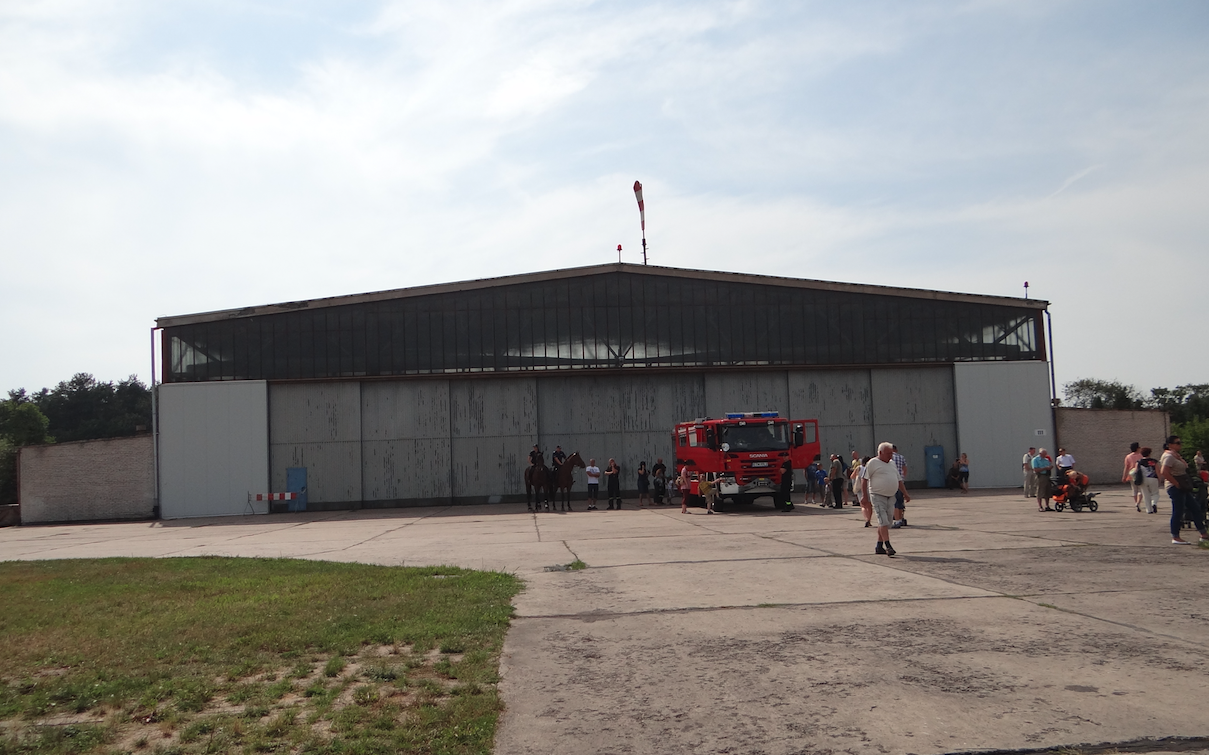
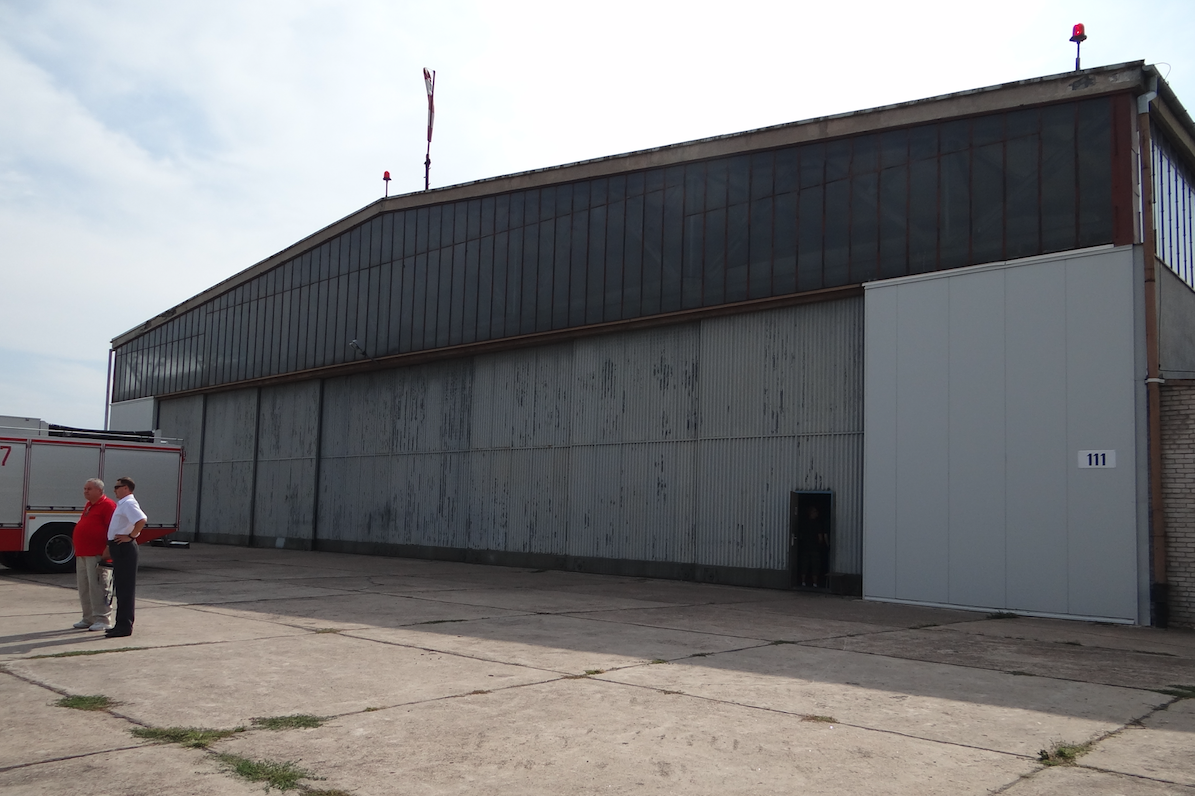
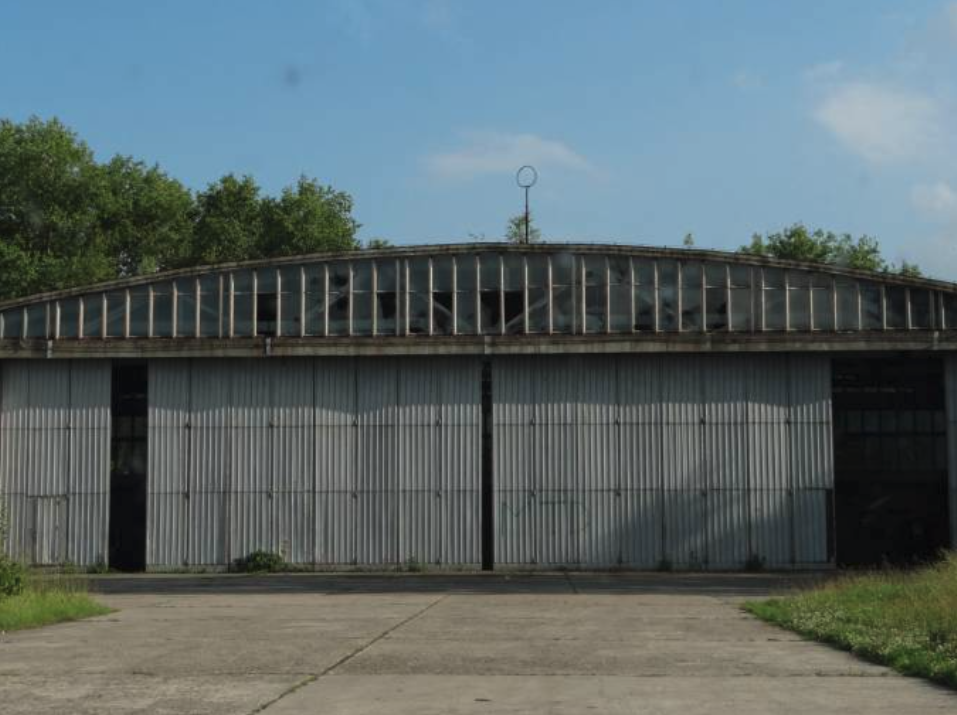
Około 1964 roku na nowym lotnisku Balice postawiono dwa nowe hangary. Jeden zlokalizowano w pobliżu centrum pola wzlotów, został przeznaczony dla serwisowania wojskowych samolotów transportowych. Drugi ulokowano we wschodniej części lotniska. Ten hangar stosunkowo szybko stał się bazą dla lotnictwa sanitarnego. Oba hangary wykonano z materiałów nie najwyższej jakości. Pierwszy hangar rozebrano w 2003 roku i w jego miejscu postawiono nowy hangar przeznaczony do obsługi nowych samolotów transportowych CASA C-295 M. Drugi hangar przez wiele lat nie był użytkowany, gdyż groził zawaleniem, a nie było funduszy dla jego remontu. W 2016 roku hangar rozebrano.
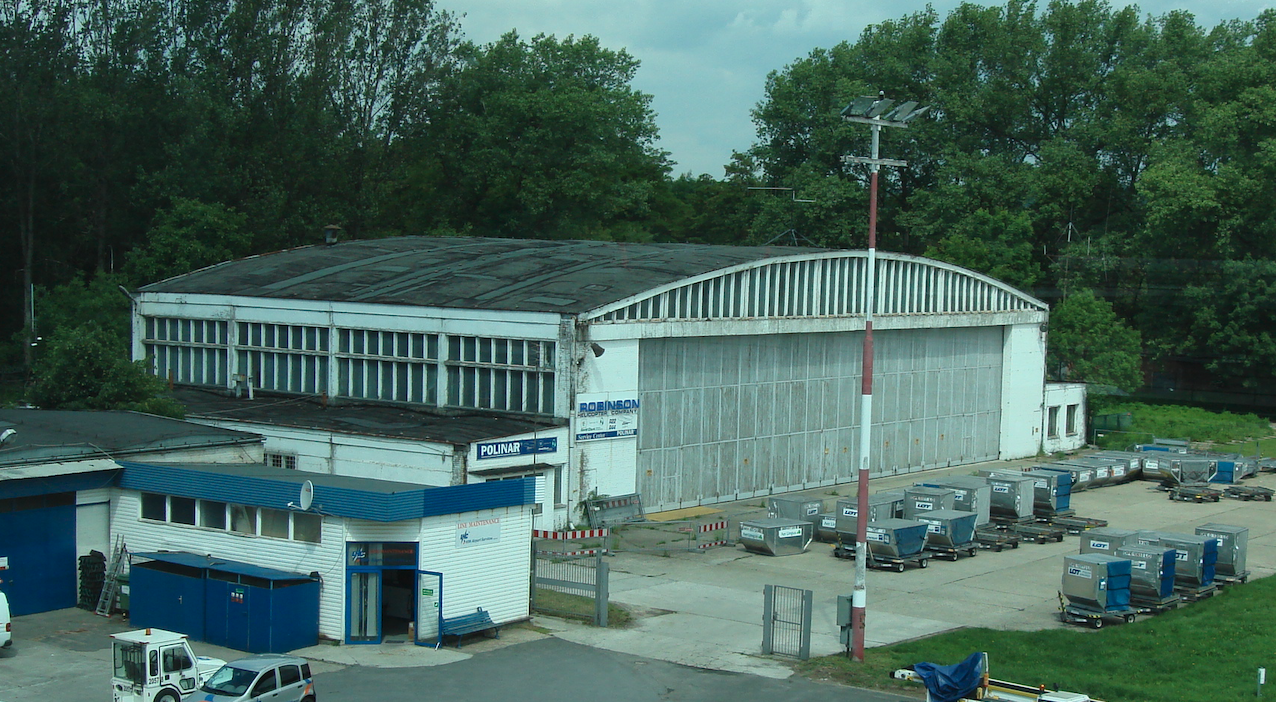
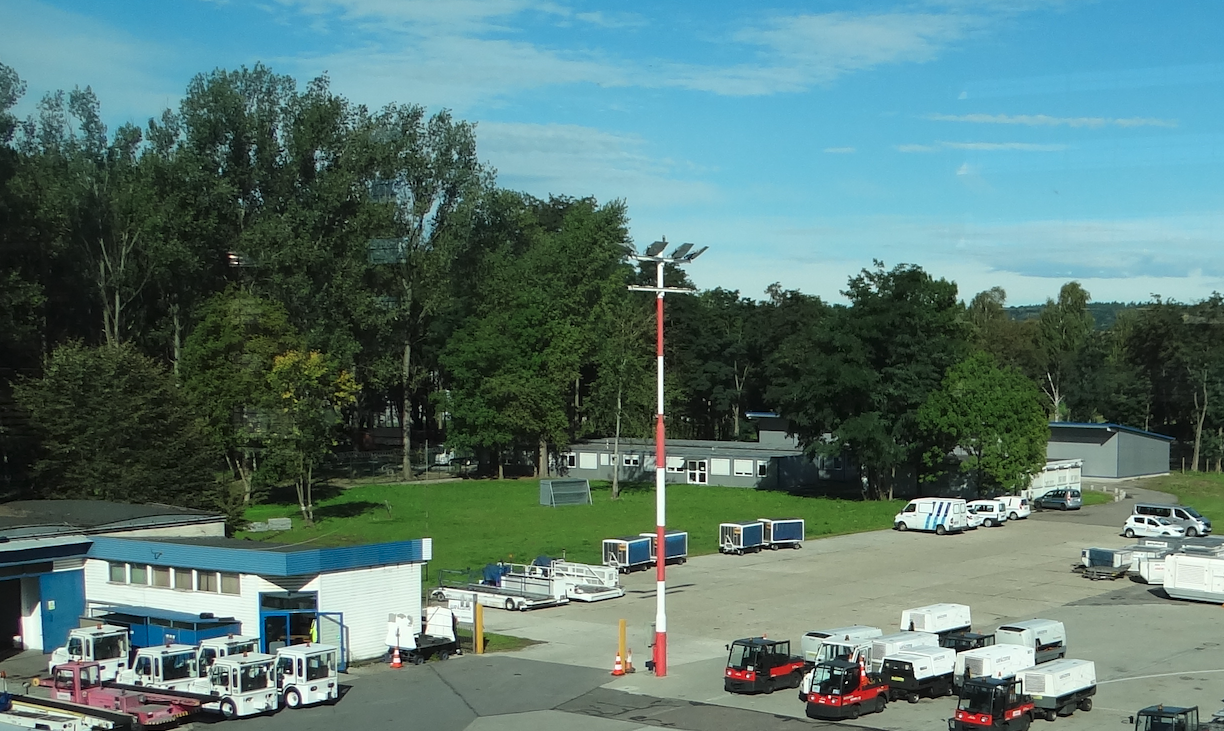
Nowoczesne hangary w Polsce.
Dopiero w XXI wieku na Polskich lotniskach zaczęto budować nowoczesne hangary, spełniające najwyższe światowe standardy. Budowane są według różnych projektów. Konstrukcje są lekkie, a jednocześnie bardzo wytrzymałe.
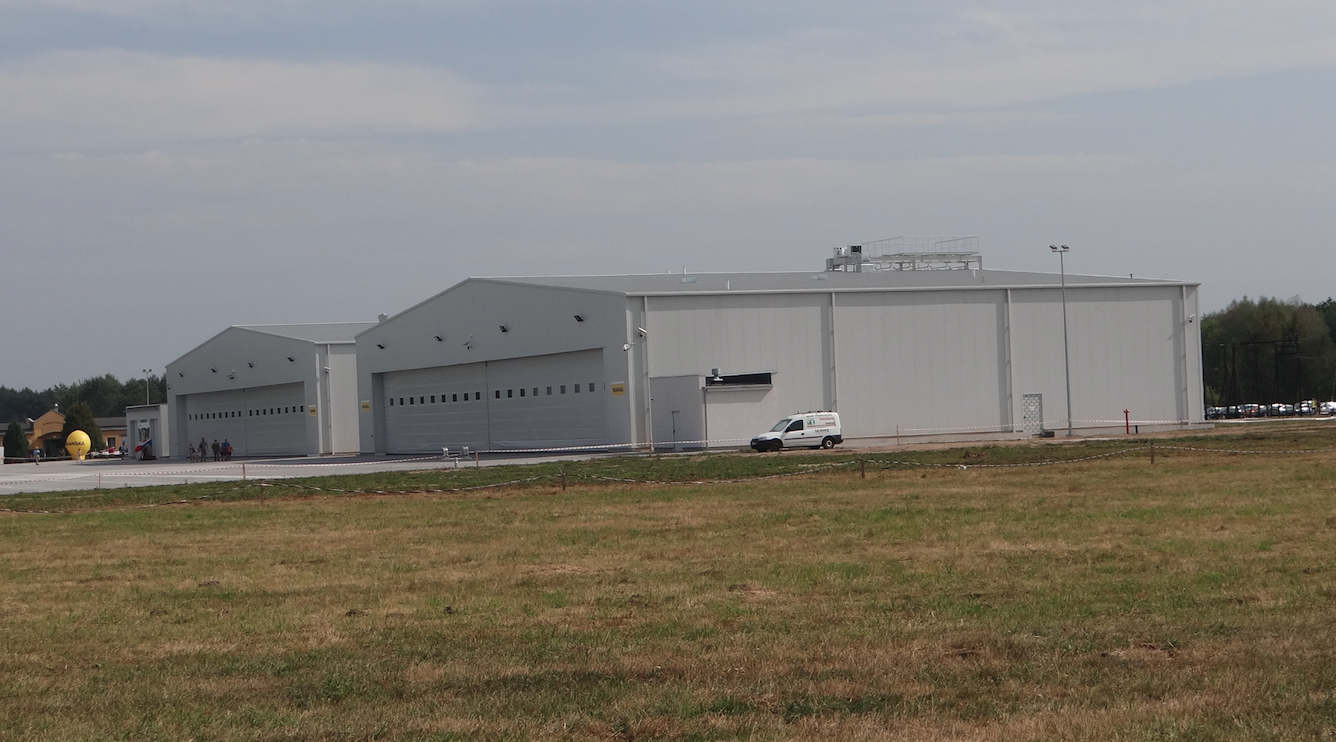
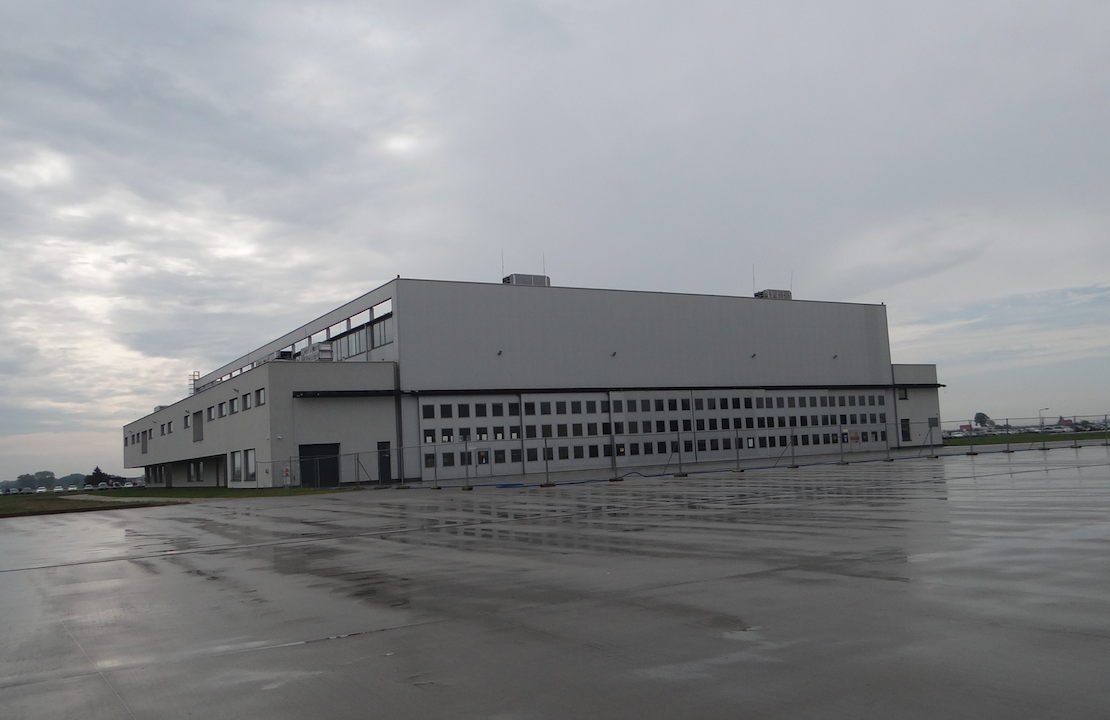
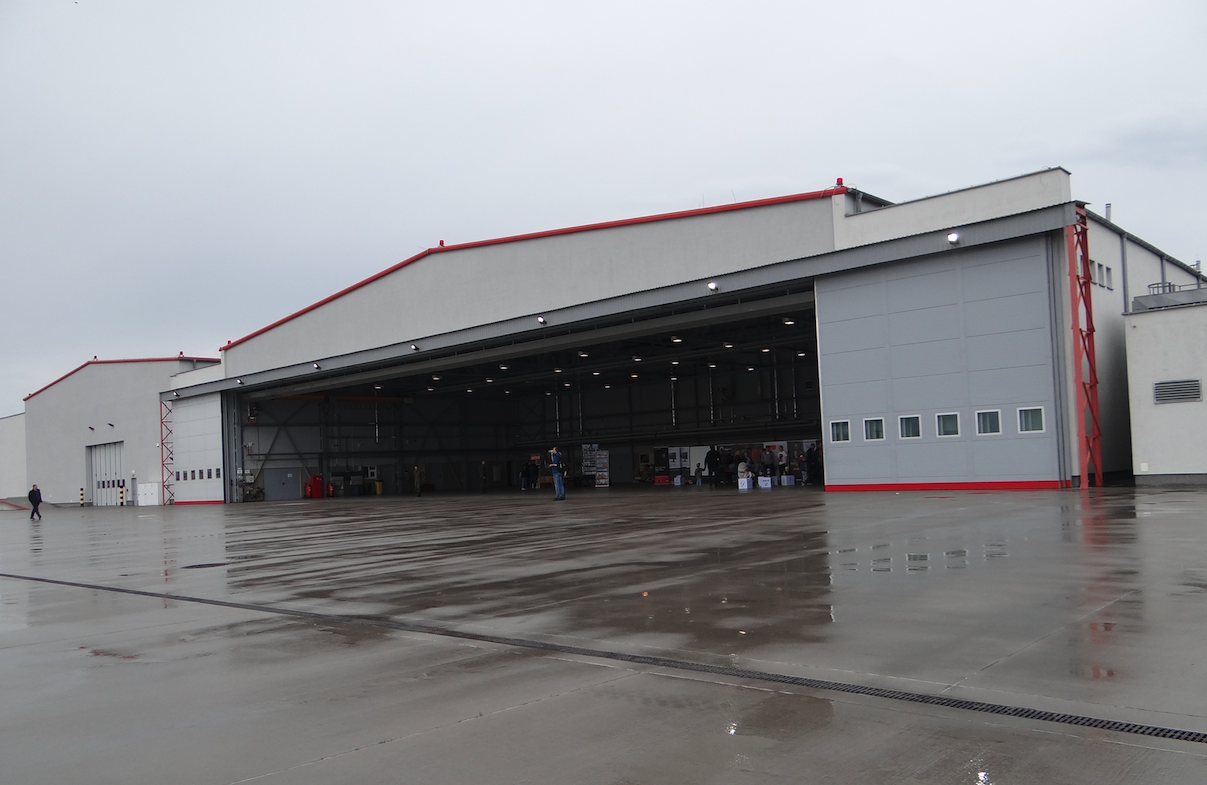
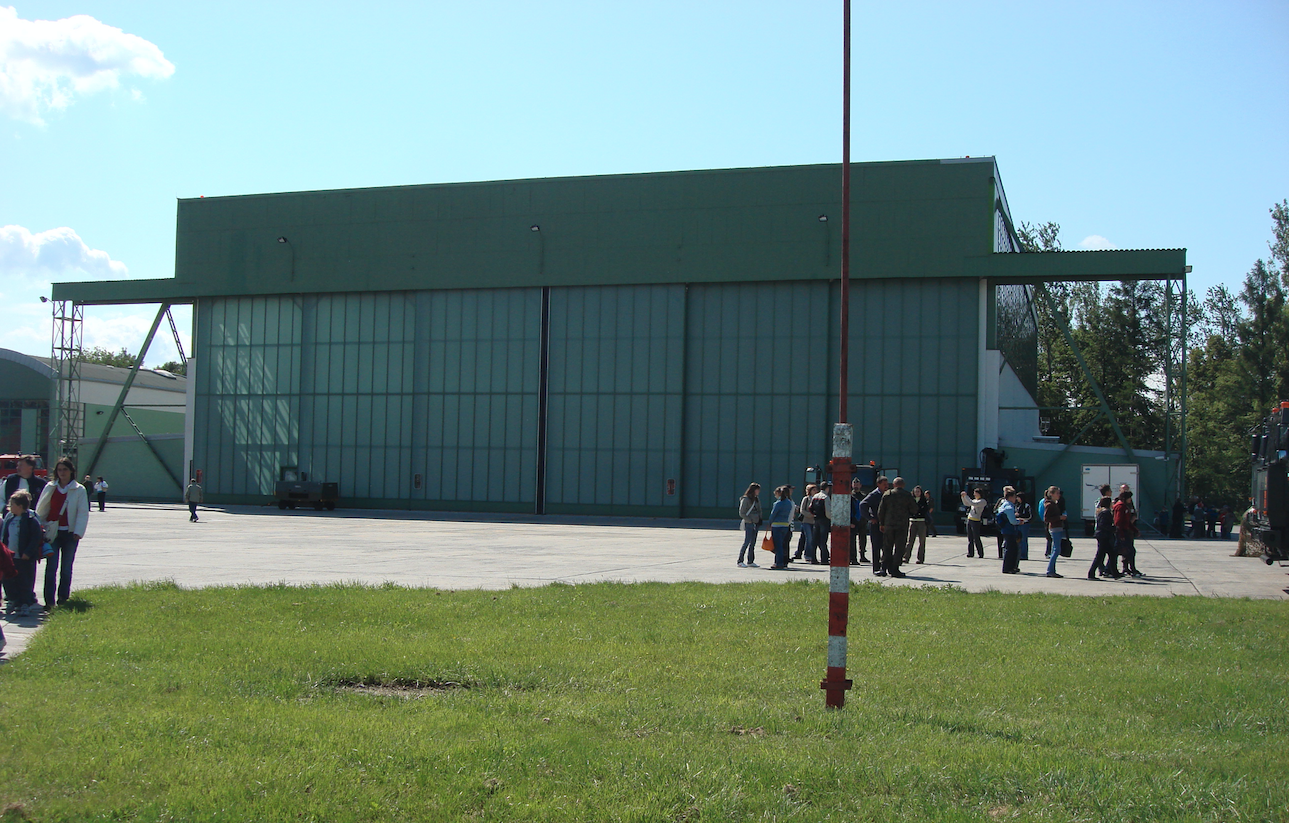
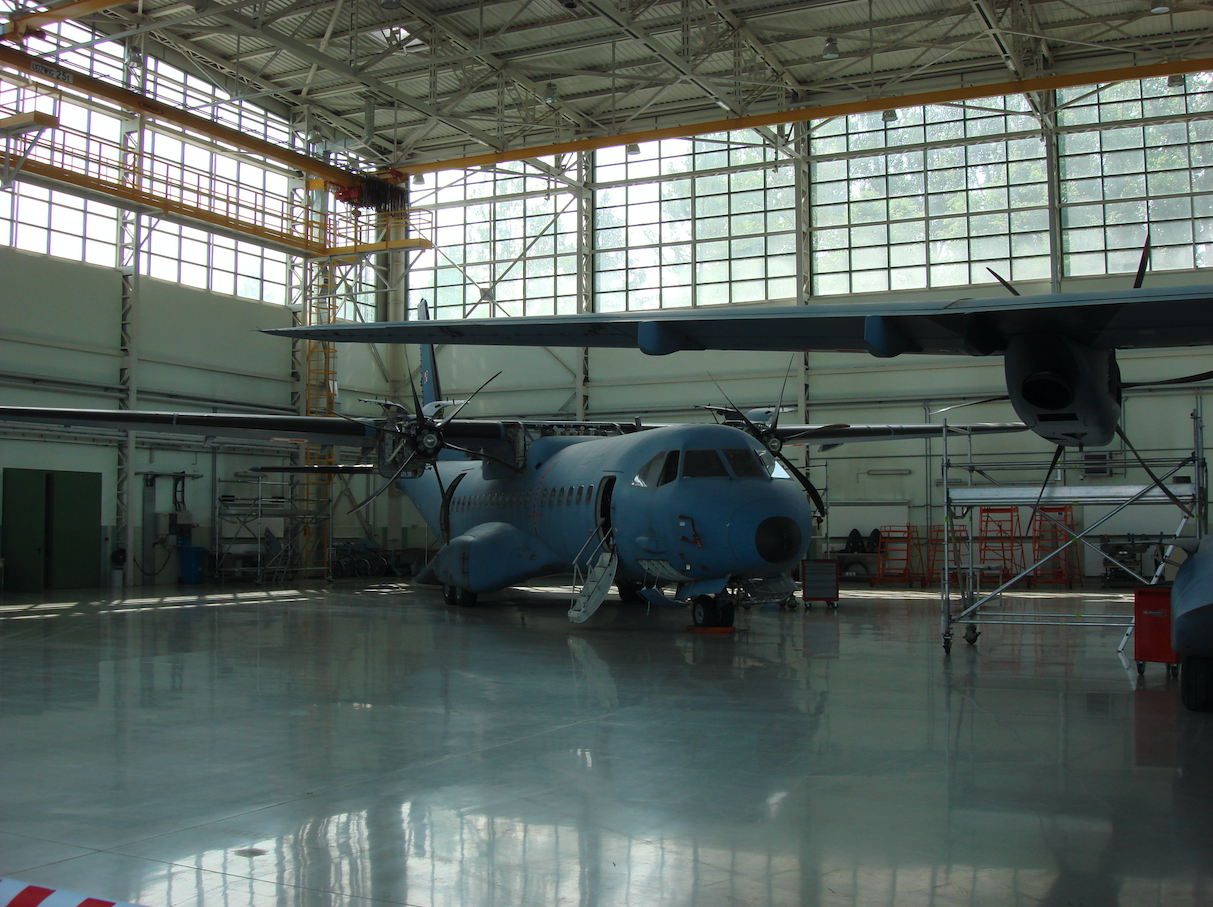
Hangary typu namiot.
Powrót do Polski hangarów typu lekkiego możemy notować od początku XXI wieku. Hangary i hale typu lekkiego okazały się tanim i trwałym rozwiązaniem problemu hangarowania sprzętu latającego. Najpierw pojawiły się one na lotniskach aeroklubowych, gdzie hangaruje się w nich samoloty i śmigłowce prywatne. Około 2009 roku tego typu hangarem zainteresowało się Wojsko Polskie dla lotniska w Powidzu. Okazało się, że stały hangar dla samolotów Lockheed C-130 nie będzie gotowy na czas. Jako prowizoryczne rozwiązanie miejsca dla serwisowania tych dużych samolotów postawiono hangar typu lekkiego. Hangary te mają wrota z obu stron.
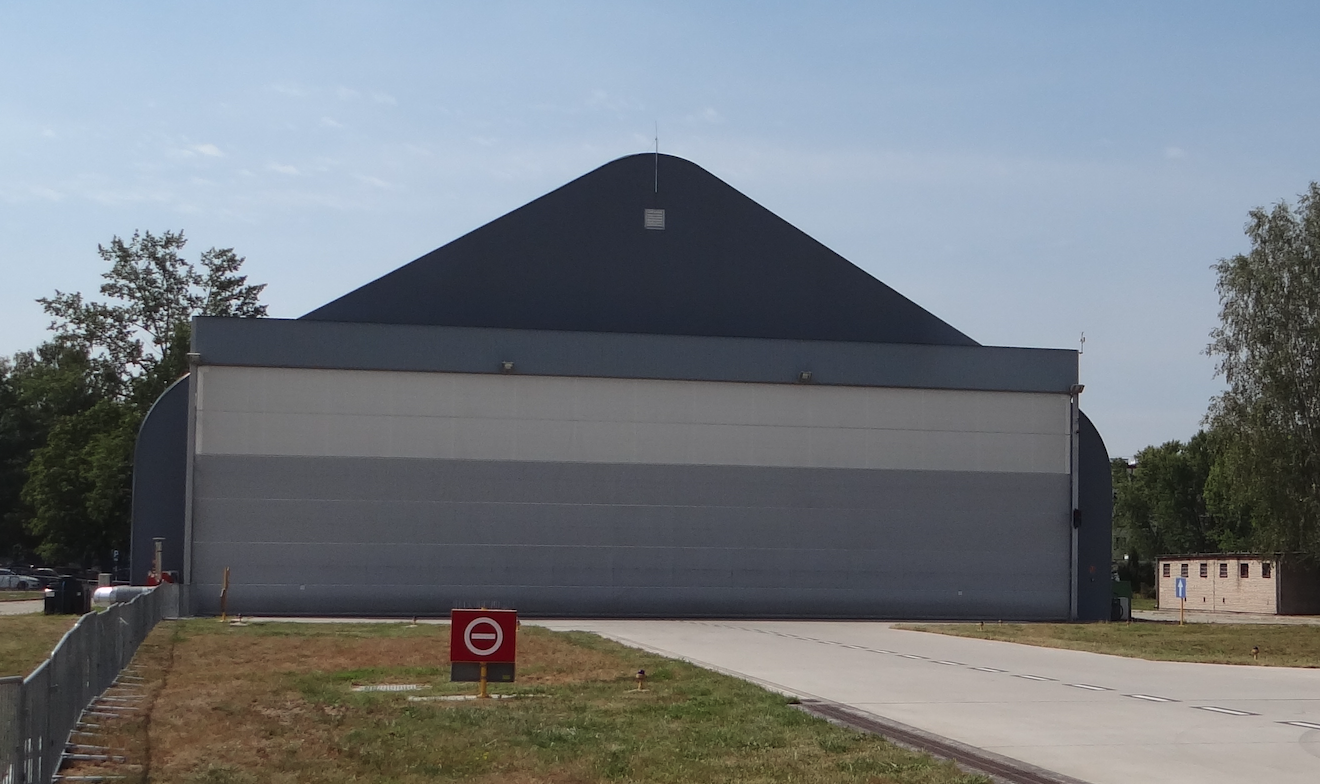

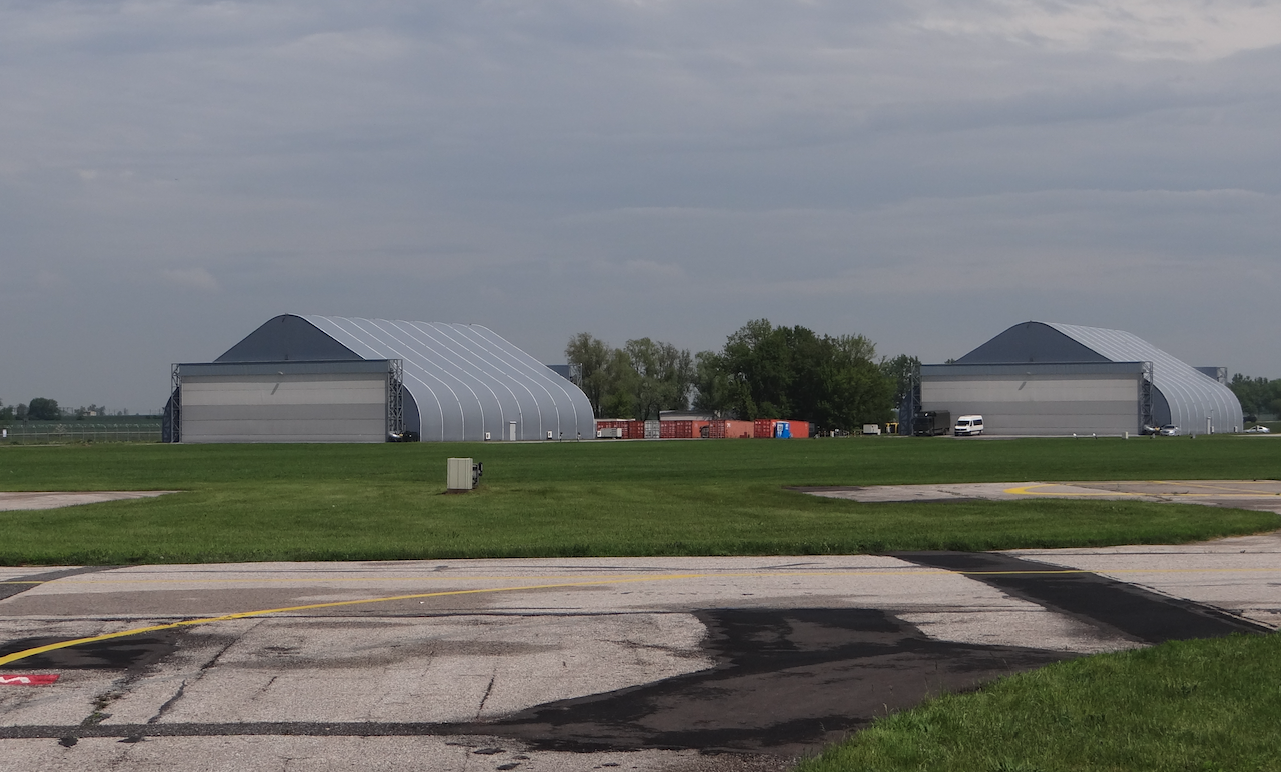
Opracował Karol Placha Hetman
